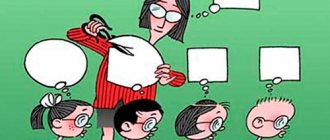What is a stereotype?
Every person has a rough idea of what stereotypes are. This is an unspoken belief in something or someone. As a rule, we do not think about the truth of the assumption put forward. We take it for granted.
A stereotype is, in simple words, a person’s absolute confidence that everything will turn out as it should, according to a program that does not depend on the will of the individual.
For example, you see a girl driving a luxurious and expensive car. What is the first thought that comes to your mind? Surely you thought about a rich lover or wealthy parents. The idea that a woman could earn a car through hard work did not occur to you. This is a clear example of a stereotype in society.
Have you ever thought about how often you come across stereotypes? Do they influence your decision? Choice? Action? Probably yes. Dealing with attitudes is not easy.
A stereotype or social attitude includes three components:
- information about the object (cognitive element);
- emotions and assessment in relation to this element;
- readiness to act according to a given scheme.
Thus, all stereotypes control society and individual behavior. The bad thing is that most often people act unconsciously, without good reasons for their actions, thoughts, decisions. They automatically take steps against their will. Thinking and consciousness are limited. Such a person cannot consider himself a free person.
Using stereotypes in business communication
The limited personal experience and the inaccessibility for most people of empirical verification of the information they receive about a whole range of social phenomena create the possibility of manipulating social stereotypes.
The methods of using stereotypes discussed below are not uninteresting from the point of view of the practice of business communication.
- Labeling: a person is “fitted” into a stereotype such as “demagogue”, “populist”, “womanizer”, “drunkard”, etc. The favorite means of specialists in the field of intrigue is successfully used to eliminate competitors in political and business life. As a counter-argument, attention should be focused on the inadmissibility of replacing real facts with subjective assessments
- “Brilliant uncertainty”, the use of stereotypes, the meaning of which is not entirely clear and unambiguous, but evokes positive emotions, since here the assessment prevails over the description. This includes such common concepts as “democracy”, “human rights”, “universal values”, “in the interests of the law”, etc. Option for communicating with management: “Your decision is undemocratic (violates human rights, social justice)!”
- Appeal to the majority as a means of strengthening one’s position. The volitional aspect predominates. This includes judgments like “at the numerous requests of the working people”..., “all Russians unanimously support...”, etc. Arguments like “the team has an opinion...”, “the team believes that...” are suitable for business communication.
- Transference: using old symbols that already have some value. In business communication, a reference to an authoritative person is possible in several ways: personified - a reference to a specific managerial person;
- impersonal - “They know there!”; “I’m in the know”; “And then I called, you know, who...”; “We are discussing a problem and then I came in…”, etc.;
- use of quotes - “Socrates also said that...”. Common people, or “their guy.” It is based on identification with the people and subordinates.
The depersonalization of communication that arises due to stereotypes in some cases does not facilitate, but on the contrary, complicates business communication and interferes with the establishment of informal relationships. Translated into the language of social psychology, the well-known metaphor “one is greeted by his clothes...” means that “one is greeted by a stereotype and seen off by his mind!” This problem is especially relevant in the “manager-subordinate” relationship system.
5 pages, 2338 words
The concept of the psychology of influence in the book by R. Cialdini “Psychology of influence”
... Benevolence 7. Authority 8. Deficit References Introduction Robert Cialdini's work “Psychology of Influence”, one of the best textbooks in which motivation mechanisms, ... informed decisions are subjected to modern analysis. Sometimes we think automatically, often under the influence of some stereotypes. For example, well-known stereotypes include “all blondes are stupid”, “men are smarter...
Who introduced the concept of stereotype?
The concept of “stereotype” was introduced by Walter Lippmann in the 20s of the last century. An American journalist explained the significance of the phenomenon. He argued that a stereotype should be understood as a “picture in the head.” It occurs in certain situations under the influence of external circumstances.
According to Lippman, a stereotype is a stable representation of an individual or society in a particular phenomenon. A person does not rely on his own experience. He acts and thinks according to a ready-made scheme that was not created by himself.
The term came to us from the ancient Greek language. It consists of two words: “stereos” - solid and “typos” - imprint, that is, it is a kind of stable trace, image, opinion.
It is very difficult to fight stereotypes. The human consciousness is not ready to think and analyze. It is easier to work using a ready-made program.
Types of stereotypes
Let's find out what stereotypes are. This is not an entirely simple question, since there is no single classification. Stereotypes are viewed from several perspectives. For example, O. Komarova identifies three types:
- ethnic;
- professional;
- half-role.
And V. Panferov divided all stereotypes into expressive-emotional, public or social and anthropological. We will look at the types of stereotypes that we most often encounter in real life.
Age stereotypes
An age stereotype is formed by one generation and passed on to another “by inheritance.” In addition, each age group is characterized by one or another social attitude. In turn, age stereotypes can be both positive and negative, carrying a negative message.
For example, if we talk about an elderly person, we automatically imagine a decrepit, feeble old man. We don’t think about the fact that he may have excellent health and an adequate perception of the world. We attribute all his mistakes or merits to his age.
Gender stereotypes
Gender stereotypes are public opinion about the behavioral forms of a man or woman. We are sure: a woman is incapable of driving a car well, and a man is incapable of baking a pie. Practice shows the opposite. But this is not proof for us.
Gender stereotypes are also developed over time. Their appearance is associated with certain values in society and the experience of previous generations.
It is very difficult to overcome gender stereotypes. For example, almost everywhere the role of head of the family is given to a man. Although in reality it is often the woman who supports the family.
Or, for example, it is generally accepted that maternity leave is the responsibility of the mother. But the father is also given this right. However, in this case, society forgets about equality and condemns couples who switched roles without agreeing with him on their decision.
Heterostereotypes
Heterostereotypes are an assessment of another nationality. This type is similar to ethnic stereotypes, but there is still a difference.
We create for ourselves a general idea of each people. And according to this attitude we judge an individual representative of the nation. Our assessment includes a person’s appearance, his character, customs, and temperament. We deprive the individuality of a particular person of a particular nationality.
Social stereotypes
Stereotypes of public opinion play a huge role in our lives. They are formed in a certain society, in a particular area. They often have isolated distribution and have no meaning for those who do not belong to a particular society.
Society can be characterized by different characteristics. For example, teachers have their own professional stereotypes, while residents of the city of Voronezh, for example, have different ones.
Social stereotypes
A social stereotype is a general attitude; it applies to all social strata and does not depend on the position and status or profession and gender of the individual.
It is generally accepted that children of wealthy parents are weak-willed, spoiled creatures who get everything for nothing. The heir to a rich mom and dad is initially deprived by society of any positive qualities. If he graduated from a university with honors, it means the document was bought; if he opened his own restaurant, it means his father gave him money. No one is interested in the details. We know the results in advance. We don't need confirmation.
Ethnic stereotypes
Ethnic stereotypes are also a general idea of the people living in the same territory. For society, historical facts, information about the culture or way of life of the nation serve as reference points. With all this, knowledge is superficial.
We endow all representatives of the nation with common characteristics. For example, Tatar women are proud of their ability to bake delicious belyashi or echpochmak. When a Tatar girl is asked to bake a pie, everyone is sure that she knows how to do it. But expectations are not always confirmed.
Originally Russian question
The victim of a stereotype can be either the relay of the misconception or the receiving party, a seemingly uninterested party. It’s funny, but in the vast expanses of our vast homeland there are wandering unique ones - two in one. This often occurs among teenagers who consciously choose a socially correct profession, throwing their natural abilities and abilities into the farthest corner of the darkest ideological closet.
The drama of intrapersonal contradiction is the active imposition of one’s own self-criticism on rigid parental stereotypes. The criteria of success, correctness, relevance - in general, the phenomena are very ambiguous, and then there is external pressure. Absolutely trouble! Indeed, in the modern world, such people sooner or later wash up on their “native” shores, but how much time is wasted!?
Before it’s too late, let’s look for the answer to the notorious classic question. What to do with all this mess? What to do if, among all of the above, you found your portrait or an example from your own life?
Naturally, the very first step is awareness of the problem . The second is the creation of a new model of the world . That model that will become your guiding star, a new map with which you can achieve peace and harmony in your own soul.
And the final, final and, perhaps, the most difficult step is accepting yourself as new, on the still old map of the world . Your brain, psyche, soul and even body will need some time to adapt. A somewhat mechanical formulation, but any process of learning and adoption of innovations has a biological nature. Even in such seemingly rather abstract things. This is by no means a five-minute process. Be patient and the boundaries of your world will become wider











